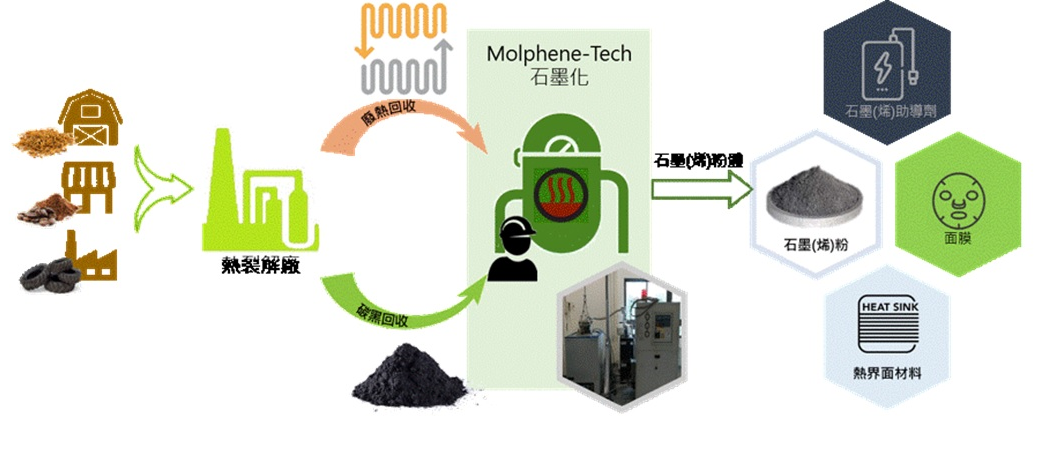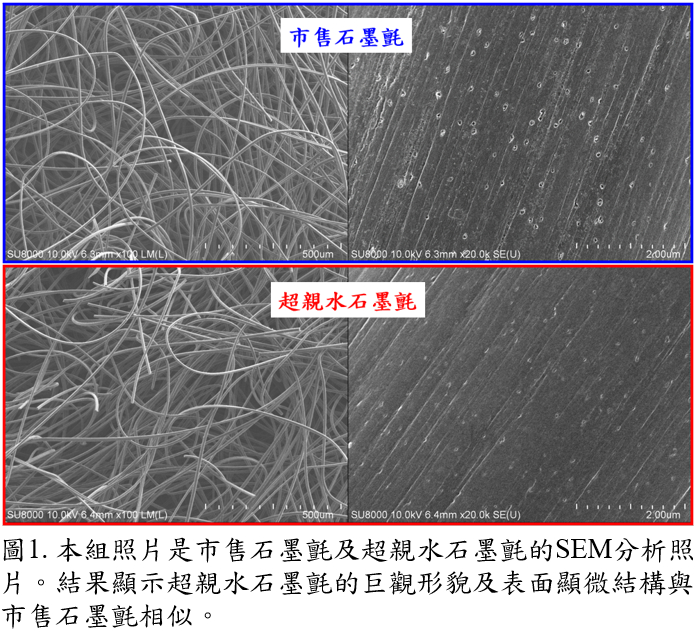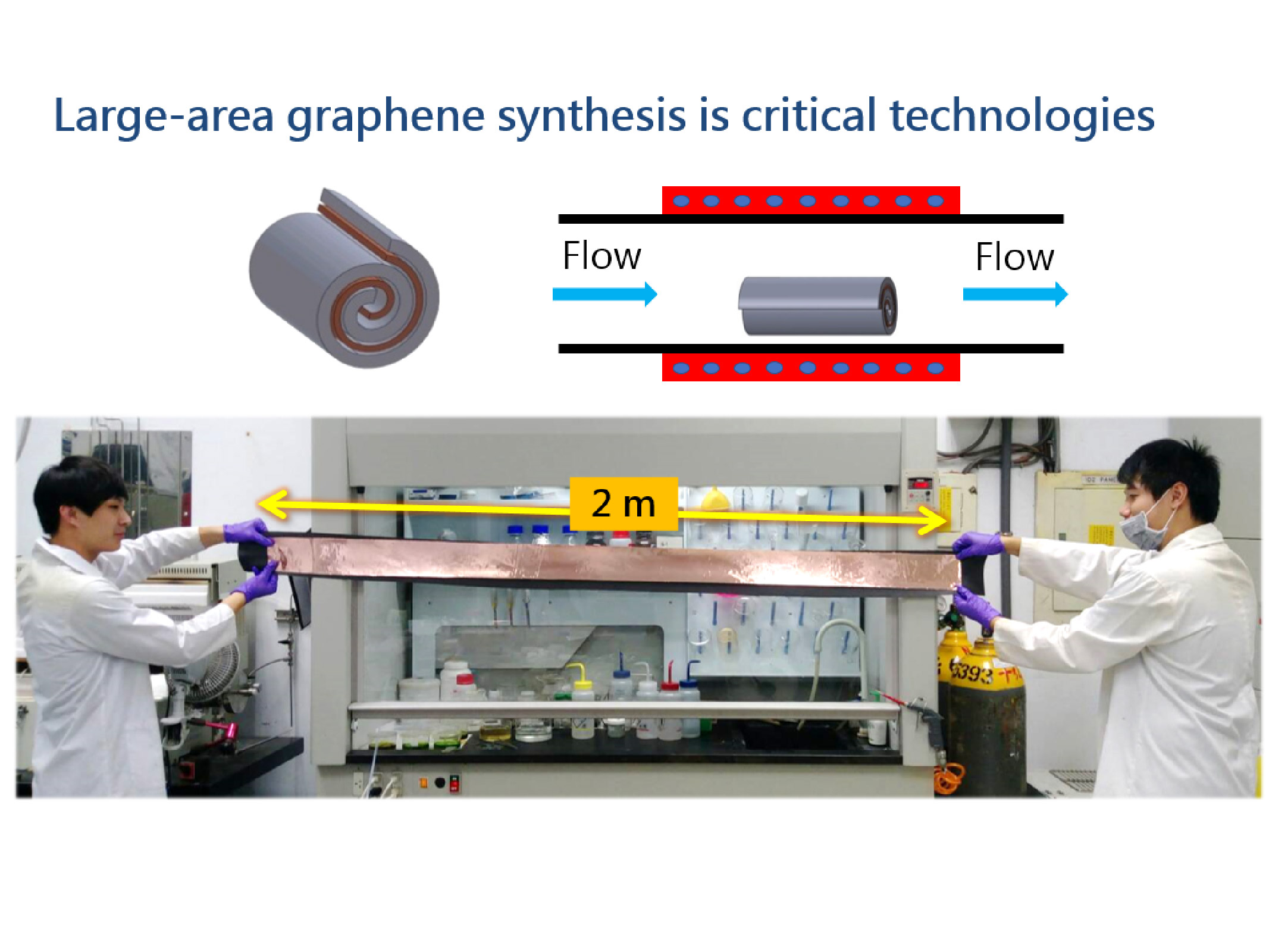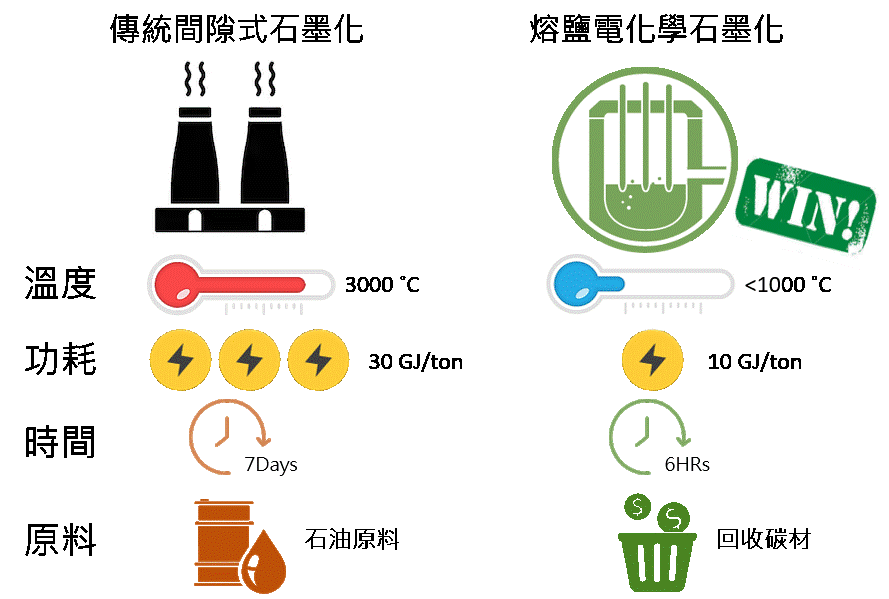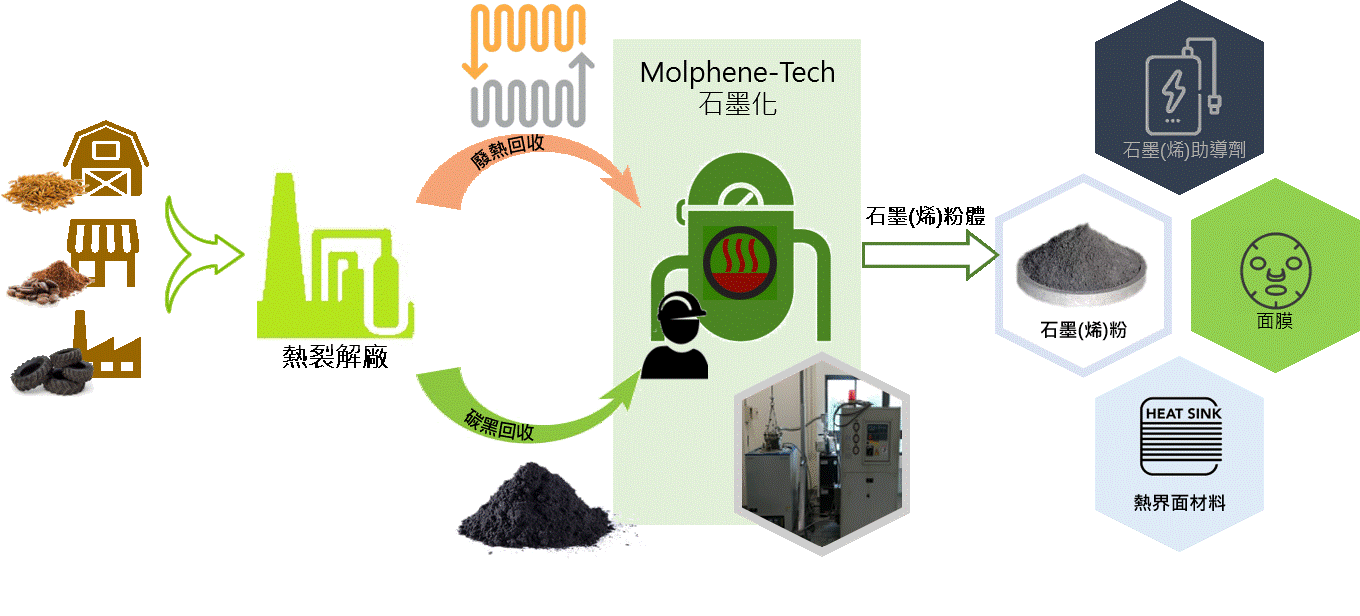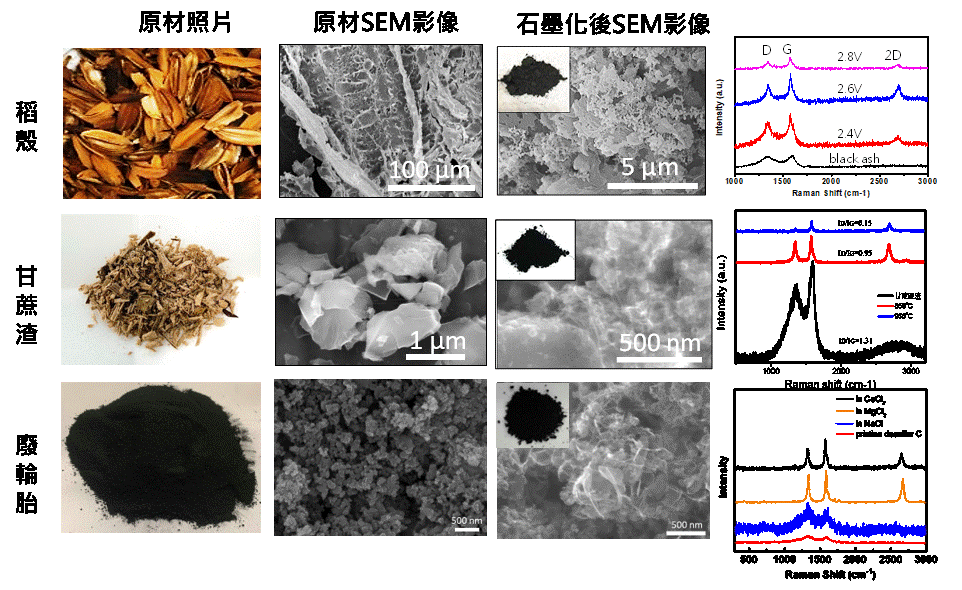| Technical Name | A green production of waste carbon convert to graphite(graphene) nanopowders | ||
|---|---|---|---|
| Project Operator | National Tsing Hua University | ||
| Project Host | 闕郁倫 | ||
| Summary | The present invention relates to the field of low-temperature electrochemical synthesis of graphite (graphene), specifically through the molten salt electrolysis process. It is noteworthy that cathodic polarization and the accompanying surface chemical reactions can provide a low-temperature synthesis of graphite (graphene). The cathodic polarization in molten salts can promote the surface deoxygenation and long-distance rearrangement of carbon atoms, thus these un-bodied carbon materials are transformed into graphite (graphene). Additionally, the current potential of the cathode (work electrode) can be adjusted to accelerate the graphitization and carbonization process of amorphous carbon. |
||
| Scientific Breakthrough | This invention can successfully convert hard carbon into high-value graphite (graphene). The invented process is simple, low-temperature, low-cost, and without the need of adding catalysts. The parameters of the process, including reduction potential, current density, temperature, molten salt, and additivities can artificial adjustment to modify the product of the physics and chemical property. Product including nanopowders, nanofibers, nanosheets, and hollow nanospheres can be with a wide range of applications in fields such as energy storage, catalyst, absorption, separation, metal processing, precision die, aeronautics, and astronautics. |
||
| Industrial Applicability | The applications of graphitized carbon black through this process may aim at lithium-ion batteries-related materials (conductive additives, negative electrodes), energy storage (carbon-zinc batteries, fuel cells), industrial applications (refractory materials, steelmaking), general household applications (lubricants, colloidal graphite), military applications, diamond like coating, etc. |
||
| Keyword | electro-deoxidation low-temperature electrochemical graphitization molten salt electrochemistry reduction lithium-ion battery graphite anode conductive additives high-value applications | ||
- ashu547@gapp.nthu.edu.tw
other people also saw

